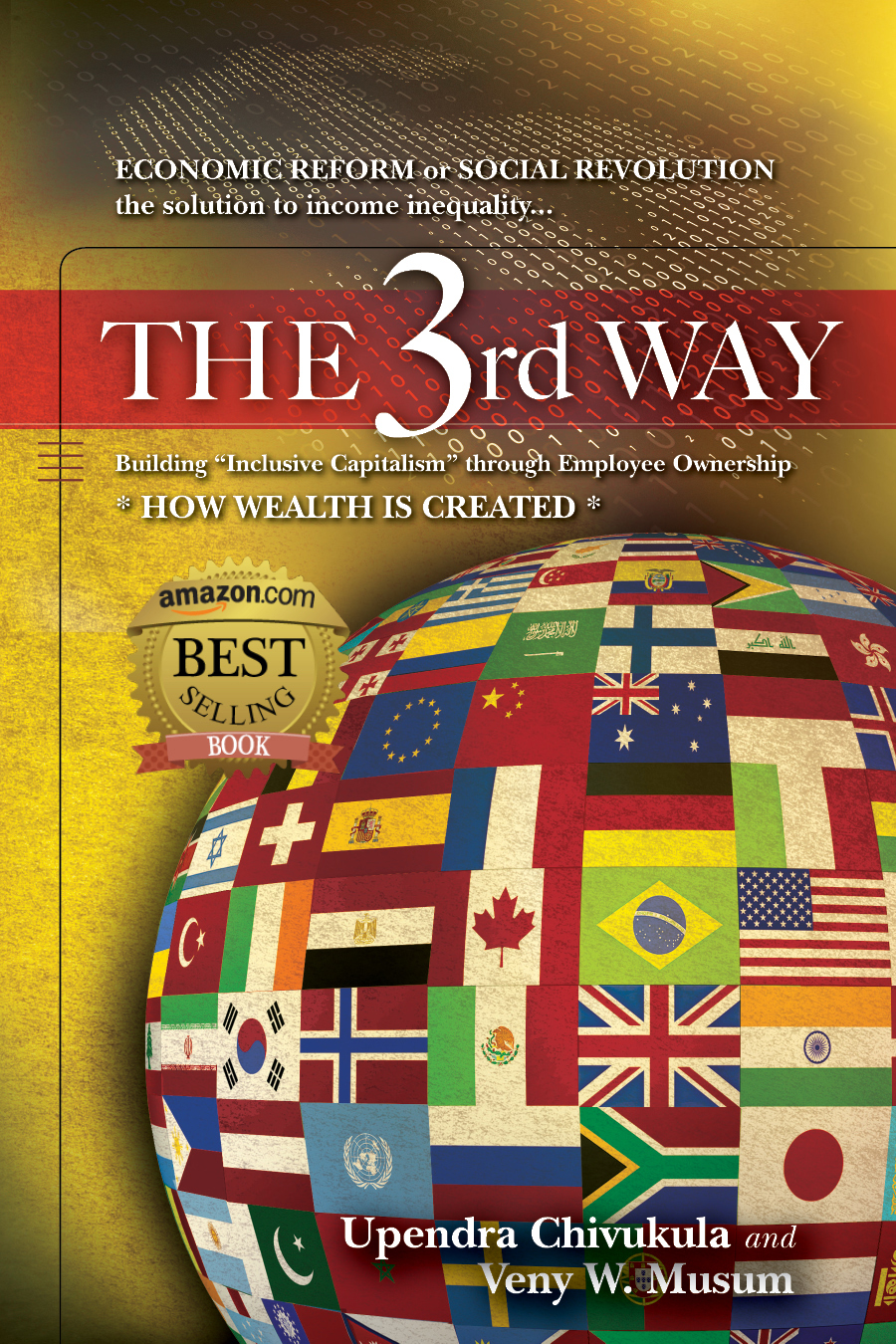“How to Fight Inequality with Stocks” – New research finds an intriguing benefit to employee ownership
- January 29, 2016
- Uncategorized
By Danny Vinik, Politico/The Agenda
In the grand national debate over inequality, the nuances of a company’s ownership structure don’t get a lot of airtime.
Hillary Clinton, maybe the wonkiest candidate, put forward a plan in July that would offer a tax incentive to firms to implement an employee stock ownership plans—ESOPs, as they are known—so that employees could profit from their company’s successes. Bernie Sanders has supported similar legislation in Congress. But neither candidate mentions ESOPs very often on the campaign trail as they compete in their bids to restore fairness to the American workplace.
That may be a mistake. New research from economist Jared Bernstein, previously the top economist to Vice President Joe Biden, finds that ESOPs actually reduce inequality a significant amount—and they might do it in a different way than anyone previously imagined.
“I went into the project thinking that ESOPs wouldn’t make much of a difference at all pushing back on inequality,” Bernstein said, “and I came out of it thinking there’s more there than I thought.”
Bernstein’s new paper, shared exclusively with POLITICO and set to be released later Tuesday morning, builds on the existing belief by economists that ESOPs reduce inequality by shifting shares of stock to people who are traditionally unlikely to hold stocks. Around 80 percent of the value of the stock market is held by the richest 10 percent of Americans while the bottom 40 percent barely have any wealth in the stock market at all. ESOPs transfer stock ownership from those who currently hold stock to those who don’t, causing capital income to be more equally distributed between the rich and poor.
But Bernstein looked at firms with ESOPs and discovered something else: they tended to have more evenly distributed wages than other firms. In other words, the gap between executive pay and the wages of low-wage workers was smaller in firms that offer some type of employee stock ownership.
Why? The study doesn’t show. In fact, Bernstein points out that these might be a self-selecting group of companies—that is, the firms adopting ESOPs are the ones that are more egalitarian already and more likely to keep their wage structure relatively equal. But it could also be that adopting an employee stock plan causes workers to work harder, raising their productivity and ultimately causing employers to boost their wages.
Bernstein added that that his findings appeared to be more than just a correlation because he found that the greater percentage of ownership that employees have over a firm, the lower level of wage inequality exists within the company.
“There’s something about these firms that as they become more dedicated to employee ownership, they become more uncomfortable with the huge disparities in internal pay structures,” he said.
So how can the government incentivize more companies to offer ESOPs? Already, a number of financial incentives exist in the tax code for firms to do so. Clinton’s proposal would add on to this, giving companies a two-year tax credit equal to 15 percent of the profits they share with workers. It’s projected to cost around $10-20 billion over a decade, but Bernstein wasn’t sold on it.
“We do a bunch already to incentivize ESOPs through the tax code,” he explained. “I don’t see much of a point of doing a bunch more.”
Instead, he suggested a more radical proposal: Requiring firms to set up employee ownership plans if they want to take advantage of major corporate tax breaks, such as bonus depreciation or deferral of income earned overseas. These are significant tax breaks for businesses and conditioning them on setting up an ESOP would undoubtedly garner a fierce pushback from the business community. But such a policy would almost certainly lead to a significantly higher percentage of employees with ownership stakes in their firm.
Bernstein also proposed a new government agency, potentially housed in the Commerce Department, that would provide expertise to businesses interested in setting up an ESOP. Such an agency isn’t going to radically reduce inequality over night or even in the next few years. But over the long run, it could start delivering noticeable results.
“I strongly suspect there’s an untapped [interest] out there, as in more employers who would introduce ESOPs or other forms of [employee ownership] if they could figure out how to do it,” Bernstein wrote in a follow-up email. “And that would reduce inequality.”
Read more: http://www.politico.com/agenda/story/2016/1/employee-ownership-bernstein-000030#ixzz3yfabLLjI
- January 29, 2016
About The Blog
Multi-Author Blog (MAB) featuring relevant articles by leading scholars and experts in the field of Inclusive Capitalism and Economic Democracy.
Purchase THE 3rd WAY
THE 3rd WAY will show you and your family the powerful secrets the top 1% know regarding how wealth is best obtained in the 21st century.

